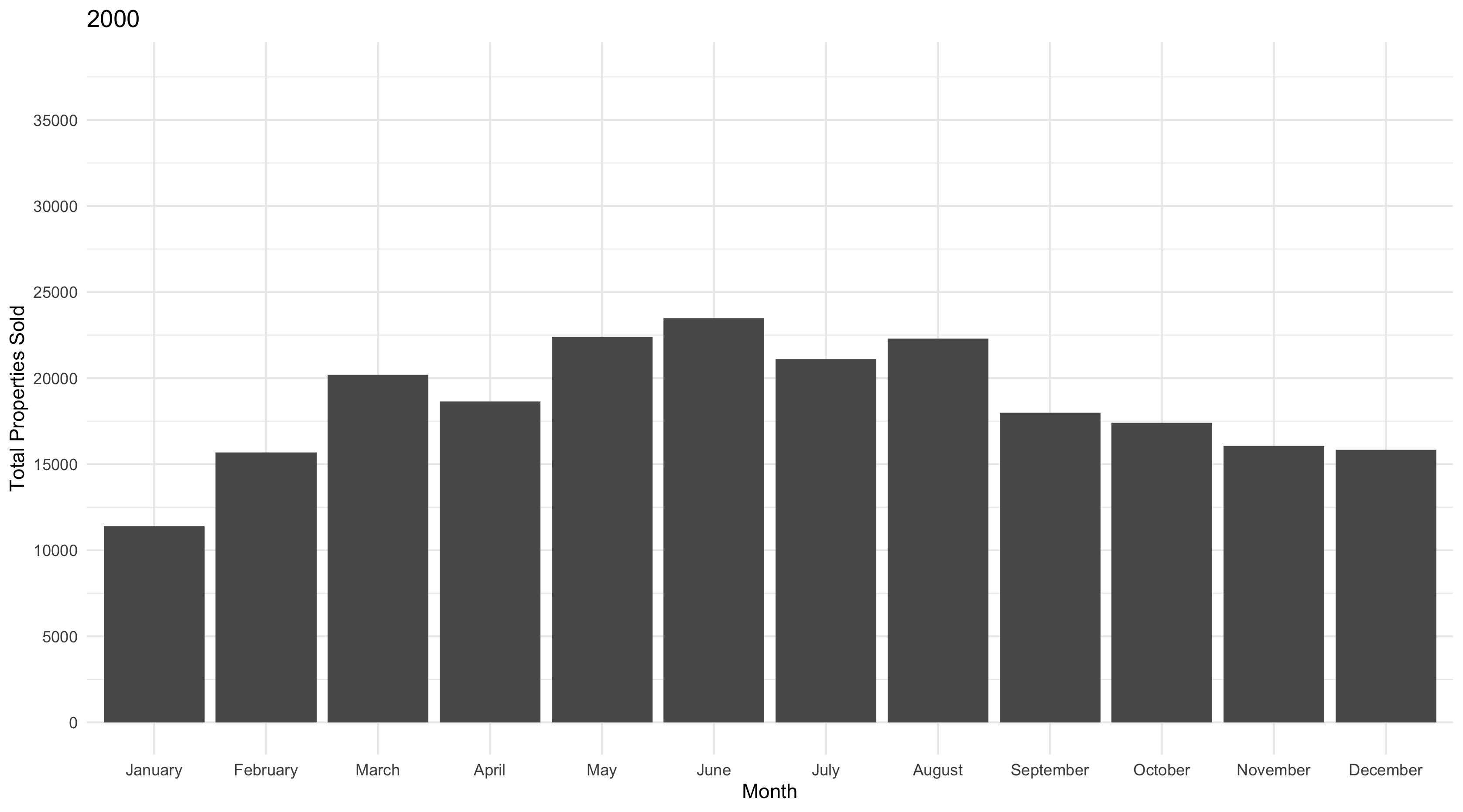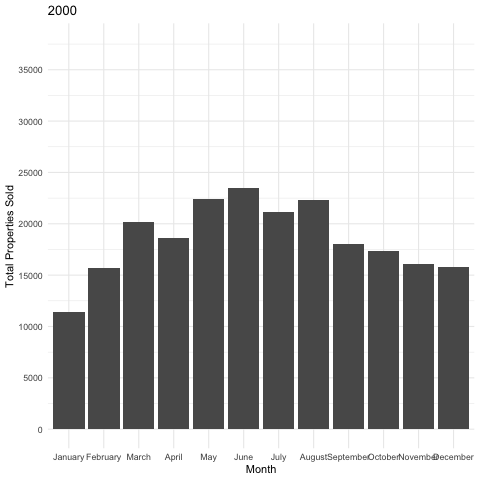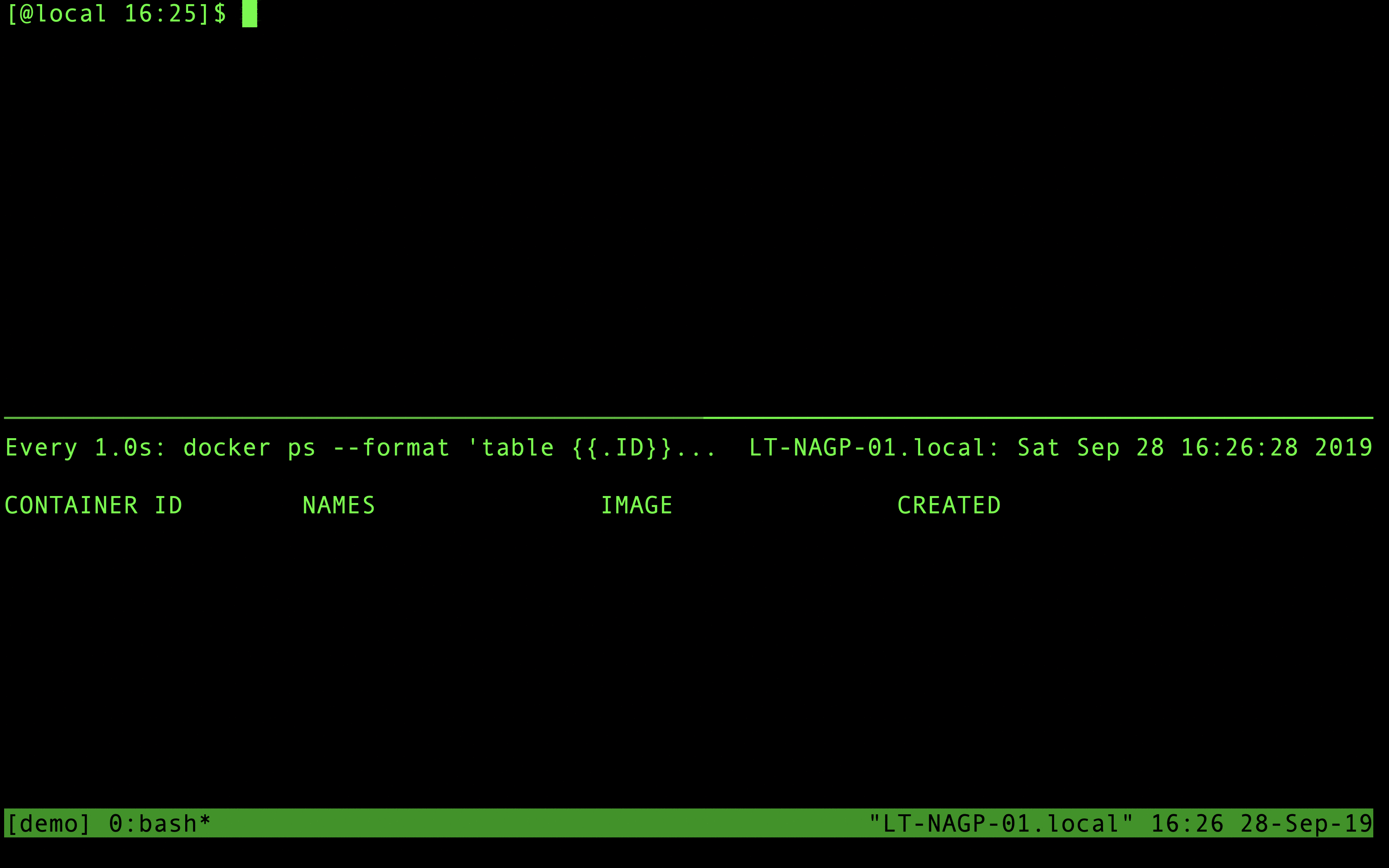With R you can turn a collection of images into an animated GIF. That can be useful for animating plots or for converting a series of arbitrary image files (not created in R) into an animation. The following will include examples of both use-cases, with a reproducible demo of the former.
The tool used in the example that follows is the magick R package, which is a wrapper for the ImageMagick library.
The first example involves animating plots that are created in R. To motivate this example we’re using a built-in dataset from ggplot2 (txhousing), which details historical residential property sales/listings in Texas by county between 2000-2015:
head(ggplot2::txhousing)## # A tibble: 6 x 9
## city year month sales volume median listings inventory date
## <chr> <int> <int> <dbl> <dbl> <dbl> <dbl> <dbl> <dbl>
## 1 Abilene 2000 1 72 5380000 71400 701 6.3 2000
## 2 Abilene 2000 2 98 6505000 58700 746 6.6 2000.
## 3 Abilene 2000 3 130 9285000 58100 784 6.8 2000.
## 4 Abilene 2000 4 98 9730000 68600 785 6.9 2000.
## 5 Abilene 2000 5 141 10590000 67300 794 6.8 2000.
## 6 Abilene 2000 6 156 13910000 66900 780 6.6 2000.The code below will prepare the data for plotting, then loop through all of the 16 years in the dataset and create barplots of total sales each month for every year. These plots will be written to disk as static .png files.
library(magick)
library(ggplot2)
library(dplyr)
library(tidyr)
## create a directory to which the images will be written
dir_out <- file.path(tempdir(), "tx-sales")
dir.create(dir_out, recursive = TRUE)
## prepare data
tx_sales <-
txhousing %>%
group_by(year,month) %>%
summarise(sales = sum(sales, na.rm = TRUE)) %>%
ungroup() %>%
mutate(month = factor(month, labels = month.name)) %>%
complete(month,year)
## get a sorted list of unique years in the TX housing dataset
years <-
tx_sales %>%
pull(year) %>%
unique(.) %>%
sort(.)
## find the month with the most houses sold to set y axis limit
most_sold <- max(tx_sales$sales, na.rm = TRUE)
## loop through years ...
## subset data ...
## create barplot of sales by month for each year ...
## write plot to file
for (y in years) {
p <-
tx_sales %>%
filter(year == y) %>%
ggplot(aes(month,sales)) +
geom_col() +
scale_y_continuous(limits = c(0, most_sold), breaks = seq(0,1e5, by = 5000)) +
theme_minimal() +
labs(x = "Month", y = "Total Properties Sold", title = y)
fp <- file.path(dir_out, paste0(y, ".png"))
ggsave(plot = p,
filename = fp,
device = "png")
}With the plots written to disk (there should be 16 .png files in this example), we can now use magick to read in the image data and stitch it all together in an animation.
## list file names and read in
imgs <- list.files(dir_out, full.names = TRUE)
img_list <- lapply(imgs, image_read)
## join the images together
img_joined <- image_join(img_list)
## animate at 2 frames per second
img_animated <- image_animate(img_joined, fps = 2)
## view animated image
img_animated
## save to disk
image_write(image = img_animated,
path = "tx-sales.gif")
To be clear … the example above is contrived to reproducibly demonstrate the magick functions.
Another (maybe more straightforward) approach to the example outlined above would be to use gganimate:
library(gganimate)
tx_sales %>%
ggplot(aes(month,sales)) +
geom_col() +
scale_y_continuous(limits = c(0, most_sold), breaks = seq(0,1e5, by = 5000)) +
theme_minimal() +
## gganimate functionality starts here
labs(x = "Month", y = "Total Properties Sold", title = "{frame_time}") +
transition_time(year) +
ease_aes("linear")
anim_save("tx-sales-gganimate.gif")
But note that these GIFs are not identical. gganimate transitions the the plot between years in a way that makes the bars expand and contract smoothly. That may or may not be the desired effect. ease_aes() can customize this behavior but it will likely be different than the GIF created with magick.
More importantly, the magick method for creating a GIF can be extended to cases when the images are not created in R. For example, the GIF below was created using a similar set of steps (image_read() %>% image_join() %>% image_animate()) on list of screenshots.
